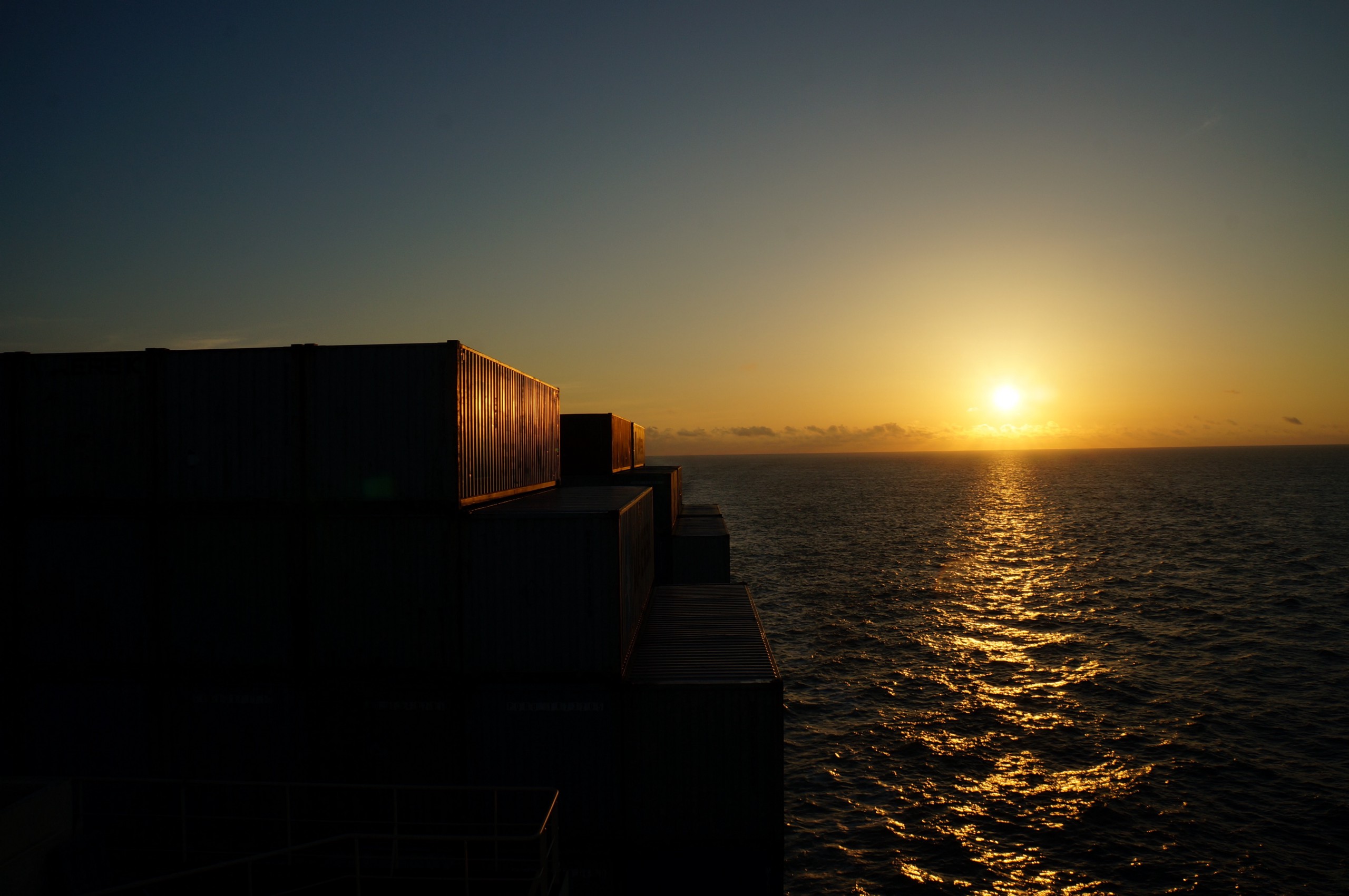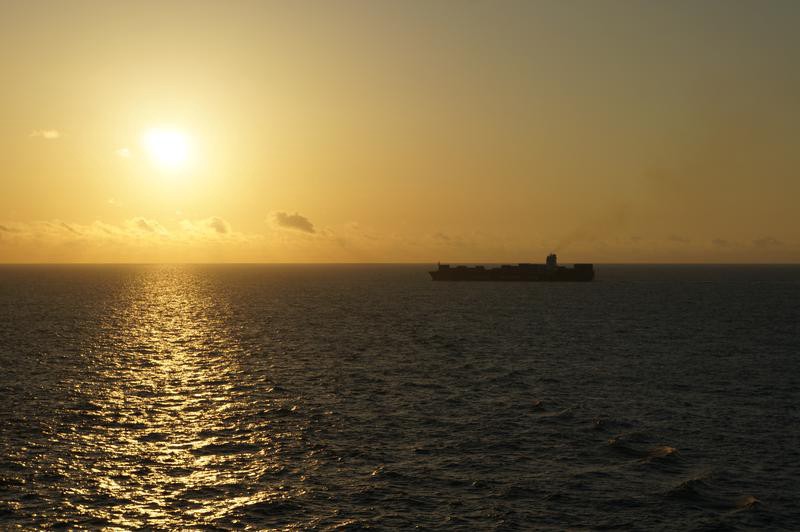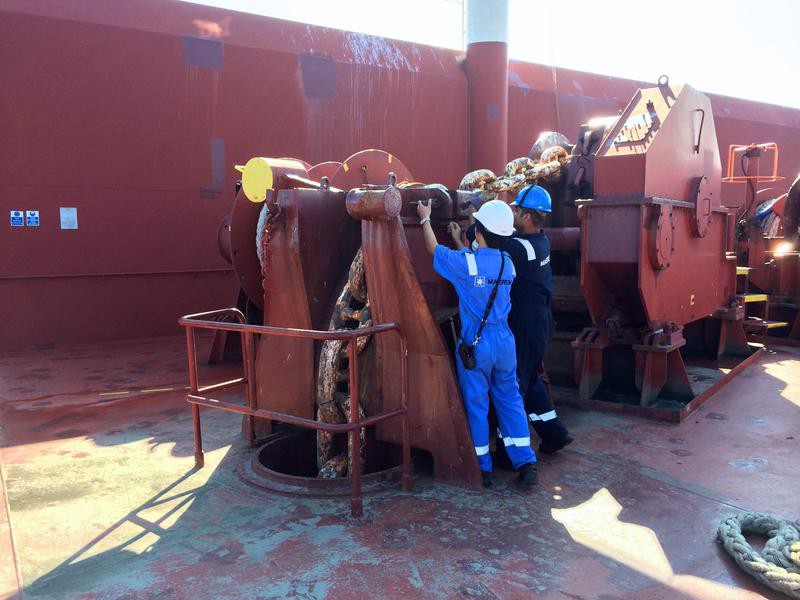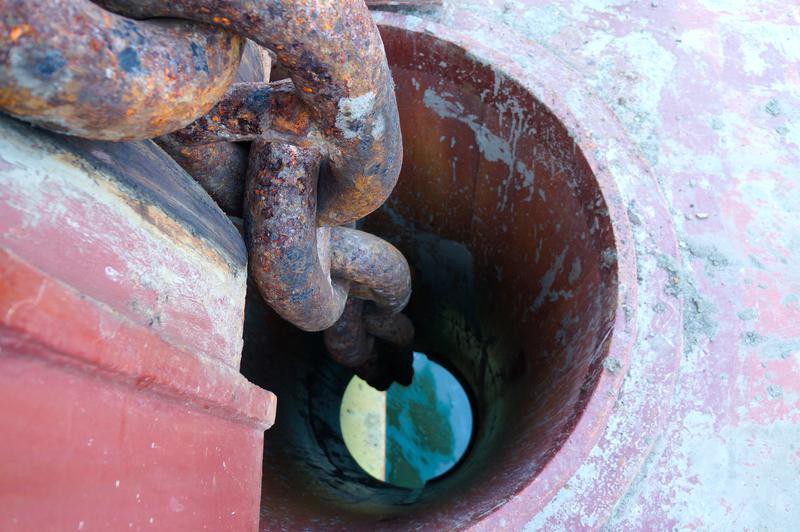

Read the next installment: “The Ship’s Cockpit“
Read the previous installment: “Our Friend, the Twistlock“

I’m not a morning person. Just before 4:30 a.m. is far earlier than I like to be awake. But I have dragged myself out of bed to watch the ship arrive at port for a 6 a.m. berthing time. In nautical terminology, berthing is the space allotted to a vessel at anchorage or port. Berthing operations for any port are actually quite complex, as schedules include a plan that can cover anywhere from three weeks to three months for a ship’s arrival, passage through port, cargo discharge, and outward passage. The port works 24 hours a day to maximize its throughput. Ultimately, we will dock at whichever time is optimal, regardless of whether I’d rather be asleep.

The bridge is not the hive of activity I anticipated and I cannot see any land ahead. Chief Officer Zhao is on watch and informs me that the plan has actually changed while I was asleep. Now we won’t berth until 8 p.m.–so there’s not much action to see. The vessel’s autopilot is moving us in a straight line. Our next turn is scheduled in an hour’s time. I take consolation in watching the sunrise.

In the meantime the ship has slowed to 10 knots, crawling along nowhere near its maximum speed of 25 knots. The Seletar hasn’t actually been near its top speed in a long while. These days the priority is lowering costs rather than transporting goods quickly. The ship travels as slowly as it can without damaging the engine, thereby reducing fuel consumption.
The Maersk’s Eco-voyage software calculates which route and speed will burn the least fuel, optimizing the ship’s itinerary. Deviation from the plan might lead to a phone call from operations, which monitor the ship remotely, asking for an explanation. Even at our reduced speed, we will arrive early. We will drop anchor and wait.
Conversation turns to the topic of timekeeping and routine aboard the ship. On the bridge the day is split into six watches shared among three officers. The first officer is on duty from 4 until 8, both a.m. and p.m. The second officer has 8 until 12 and the third officer takes 12 until 4. At night they’re joined by an able-bodied seaman (or AB), an unlicensed member of the deck crew, to act as a lookout and helmsman; and to make sure neither falls asleep.
I ask what happens when we change time zones, as we did the previous day, and gain an extra hour. Who has to work the extra time? And does he or she get an extra hour off to make up for it? I’m told I’m thinking about time the wrong way. Aboard the ship there are no working hours, but instead resting hours. You’re assumed to be working unless scheduled otherwise.
It’s the first officer’s responsibility to ensure that everyone has enough rest each day. In this environment tiredness can be dangerous. He shows me their scheduling software on the bridge’s desktop computer, dragging blocks of time around a grid reminiscent of Tetris. It balances the ship’s internal routine against external demands. Meal times against crewing requirements. Labor-intensive acts such as mooring versus the need for blocks of sleeping time. Anyone without the daily minimum hours of rest is highlighted in red.

As we approach the anchorage I head to the bow with Third Officer Bao. As the ship comes to a halt the anchor is slowly lowered to the water’s surface. The next step is to drop the anchor and a carefully calculated length of chain. I’m warned it might be loud and made to stand a safe distance away.
Loud is an understatement. Despite expecting the sounds, I can’t help jumping in surprise. I try to play it cool, hoping the crew hasn’t noticed. Perhaps the cloud of dust the chain throws up blocks their view. Chunks of mud fly across the deck, remnants brought up from the seabed the last time the chain was raised. The vibration is strong enough to spin my camera around in its mount.
The crew carefully watches the chain as it passes through the windlass. Every 15 fathoms a link in the chain bears a painted mark. This is how the chain is measured as it’s released, by counting these passing links. Once the anchor is lowered the ship slowly reverses, taking up the slack.

Without the continuous hum of the engine, the ship is now silent. The deck slowly starts to rock as we drift in the current, the vessel occasionally jerking on the end of the chain. Yellow dragonflies blown out by the wind from the mainland fill an empty bay in front of the accommodation block–the most wildlife we have seen on the voyage so far.
The captain has seen the amount of visible marine life decline during his career at sea. He recounts being at anchor long ago and lowering the gangway for the crew to take a refreshing swim. The next day they had considered going for another dip, but had spotted tiger sharks circling the vessel. There’s no sign of sharks on this voyage; no dolphins or whales.
I pass the time watching a handful of ships anchor around us. During the financial crisis the captain says he spent months waiting at anchor alongside dozens of other ships–more caretaker than seafarer; a skeleton crew waiting for new orders; the uncertain life of logistics at the whim of the markets. At least today we know how long we have to wait.

Read the next installment: “The Ship’s Cockpit“
Read the previous installment: “Our Friend, the Twistlock“
Please note that this work is not available for republication under the terms of a Creative Commons license, as per most of our other content.

How We Get To Next was a magazine that explored the future of science, technology, and culture from 2014 to 2019. Postcards From A Supply Chain follows Dan Williams as he traces consumer goods back through the global shipping system to their source. It was organized by the Unknown Fields Division, a group of architects, academics, and designers at the Architectural Association School of Architecture in London.
